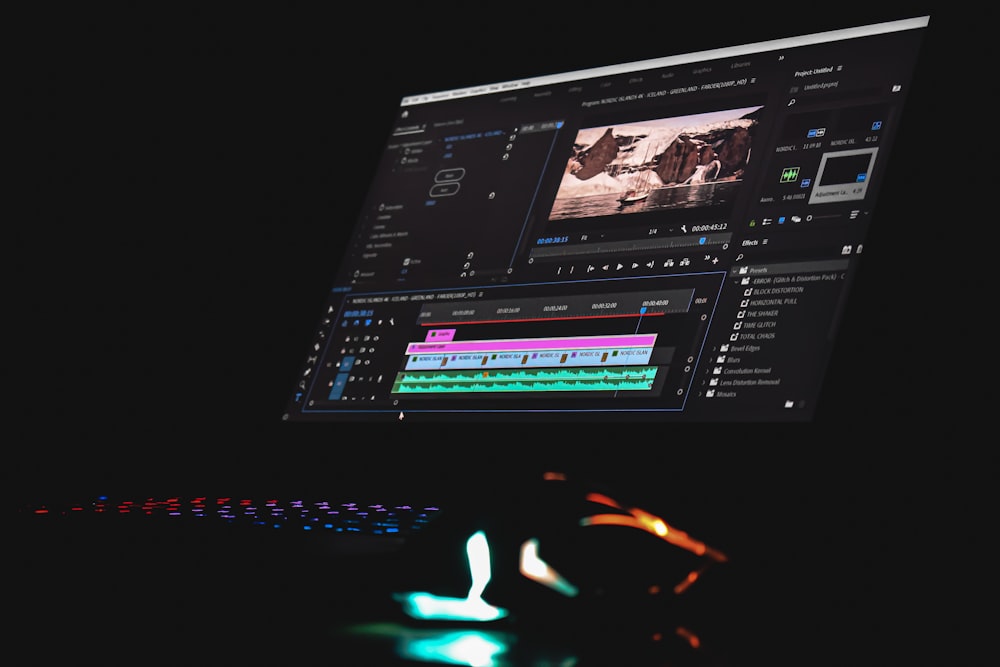Creating short form videos has become an essential part of marketing strategy, especially on popular social media platforms like TikTok, Reels, and Shorts. These bite-sized videos have the power to captivate audiences and convey your message in a concise and engaging way. Whether you are new to the world of short form videos or looking to enhance your existing skills, this step-by-step guide will walk you through the entire process of creating captivating content that resonates with your nonprofit’s target audience.
Understanding the Basics of Short Form Videos
Before diving into the specifics, it’s important to grasp the concept of short form videos. In essence, these videos are limited to a shorter duration, typically ranging from a few seconds to a minute. Despite their brevity, they have gained immense popularity due to their ability to convey messages effectively and entertain viewers in a fast-paced digital landscape.
Short form videos have become a ubiquitous form of content across various social media platforms. From the viral TikTok dances to the bite-sized recipe videos on Instagram, these videos have captured the attention of millions of users worldwide. The allure of short form videos lies in their ability to deliver information in a concise and engaging manner, catering to the ever-decreasing attention spans of modern audiences.
What are Short Form Videos?
A short form video refers to a video with a concise duration. It can be anything from a quick tutorial, a comedic skit, a music performance, or even a snippet from a longer content piece. The key is to capture the viewer’s attention within the limited timeframe and leave a lasting impression.
One of the defining characteristics of short form videos is their ability to convey a message or tell a story in a succinct manner. They often rely on visually captivating elements, such as catchy visuals, vibrant colors, and creative editing techniques, to make a lasting impact on the viewer. Additionally, short form videos often leverage the power of sound, utilizing background music, voiceovers, or sound effects to enhance the overall viewing experience.
Why Short Form Videos are Effective
Short form videos have taken the social media world by storm, and for good reason. Their effectiveness lies in their ability to deliver information quickly, engage viewers, and increase brand visibility. With attention spans decreasing and the desire for instant gratification increasing, short form videos provide an excellent opportunity to grab attention, promote your nonprofit’s cause, and inspire action.
One of the key advantages of short form videos is their shareability. Due to their concise nature, they can be easily consumed and shared across various social media platforms, allowing for greater reach and exposure. This viral potential makes short form videos an invaluable tool for nonprofits looking to raise awareness about their cause and mobilize support.
Furthermore, short form videos are highly adaptable and can be tailored to suit different platforms and target audiences. Whether it’s a humorous skit to entertain younger audiences on TikTok or an informative tutorial to engage professionals on LinkedIn, the versatility of short form videos allows nonprofits to connect with their desired demographic effectively.
In conclusion, short form videos have revolutionized the way content is consumed and shared in the digital age. Their ability to convey messages quickly, engage viewers, and increase brand visibility has made them an essential tool for nonprofits and content creators alike. By harnessing the power of short form videos, organizations can captivate audiences, spread their message, and inspire action in an increasingly fast-paced and visually-driven digital landscape.
Essential Equipment for Creating Short Form Videos
Creating short form videos has become increasingly popular in recent years, thanks to the rise of social media platforms like TikTok and Instagram. While high-end equipment can enhance the quality of your videos, you don’t need a massive budget to get started. Here are the key elements to consider:
Choosing the Right Camera
When it comes to creating short form videos, having a camera that can capture high-quality footage is essential. While professional cameras can be quite expensive, a modern smartphone with a high-quality camera can work wonders. Ensure that your device can record in at least 1080p resolution and experiment with different shooting techniques to find the most visually appealing results.
One advantage of using a smartphone is its portability. You can easily carry it around and capture spontaneous moments wherever you go. Additionally, smartphones often come with built-in stabilization features, allowing you to shoot smooth and steady footage without the need for additional equipment.
However, if you’re looking for more advanced features and greater control over your video settings, investing in a dedicated camera might be worth considering. Cameras like DSLRs or mirrorless cameras offer interchangeable lenses, manual controls, and superior image quality. They also allow you to experiment with different lenses to achieve various visual effects, such as wide-angle shots or beautiful bokeh.
Importance of Good Lighting
Lighting plays a crucial role in video quality. Whether you’re shooting indoors or outdoors, having proper lighting can make a significant difference in the overall look and feel of your videos.
If you’re shooting outdoors during the day, take advantage of natural light. Position yourself or your subject in a way that utilizes the sunlight to create interesting shadows or highlights. Keep in mind that the quality of natural light can vary throughout the day, so consider shooting during the golden hour (early morning or late afternoon) for the most flattering lighting conditions.
On the other hand, if you’re shooting indoors or during nighttime, investing in affordable LED lights or softboxes can greatly improve the lighting quality. LED lights are energy-efficient, portable, and come in various sizes and brightness levels. Softboxes, which are diffusers that soften the light and reduce harsh shadows, can create a more professional and flattering look.
Experiment with different lighting setups to create an atmosphere that suits your video’s mood. For example, using warm-toned lighting can evoke a cozy and intimate feeling, while cool-toned lighting can create a more modern and vibrant look.
Selecting the Perfect Microphone
Incorporating crisp and clear audio is as important as visuals in short form videos. While smartphones have built-in microphones, they may not always deliver the best audio quality, especially in noisy environments or when recording from a distance.
To improve sound quality, consider using an external microphone. There are various options available, depending on your specific needs and budget.
Lavalier microphones, also known as lapel microphones, are small and discreet microphones that you can clip onto your clothing or attach to your smartphone. They are ideal for capturing clear audio when you’re speaking directly to the camera or conducting interviews. Lavalier microphones are often wireless, allowing you to move around freely without worrying about tangled cables.
Shotgun microphones, on the other hand, are highly directional microphones that capture sound primarily from the front while reducing background noise. They are commonly used in filmmaking and can be mounted on your camera or used with a boom pole for more flexibility in capturing audio from a distance.
Before purchasing a microphone, consider the type of content you’ll be creating and the environments in which you’ll be filming. Research different microphone options and read reviews to ensure you choose one that suits your needs and delivers the best audio quality.
By considering these essential equipment options, you can elevate the quality of your short form videos and create content that captivates your audience. Remember, while having the right equipment is important, it’s your creativity and storytelling skills that truly make your videos stand out.
Planning Your Short Form Video
To create impactful short form videos, a solid plan is crucial. Here are the essential steps:
Defining Your Video’s Purpose
Before pressing record, establish a clear objective for your video. Are you promoting an upcoming event, educating viewers, or raising awareness for your nonprofit’s cause? Defining your purpose will guide your content creation process and maximize its impact.
Scripting for Short Form Videos
While short form videos may not require detailed scripts, outlining key points and structuring your content can contribute to a more coherent and engaging video. Keep your message concise, shareable, and align it with your nonprofit’s mission and values.
Filming Techniques for Short Form Videos
Once you have your plan in place, it’s time to start filming. Consider these techniques to elevate the quality of your videos:
Framing and Composition Tips
Experiment with different angles, perspectives, and framing techniques to add visual interest to your videos. Implement the rule of thirds, use leading lines, or explore symmetry to create visually appealing compositions.
Capturing High-Quality Audio
Although visuals are important, audio quality should not be overlooked. Minimize background noise, ensure your subject’s voice is clear and audible, and consider using background music or sound effects to enhance the overall experience.
Editing Your Short Form Video
After capturing the footage, it’s time to edit your video to perfection:
Basic Video Editing Techniques
Use video editing software like Adobe Premiere Pro, Final Cut Pro, or even free alternatives like iMovie or DaVinci Resolve to trim unnecessary footage, enhance colors, adjust audio levels, and add text overlays or captions.
Adding Effects and Transitions
Explore creative effects and transitions to add flair and interest to your video. Use these features sparingly to maintain the focus on your content, and ensure they enhance the story you are trying to tell.
By following this step-by-step guide, you will be well on your way to creating compelling short form videos that amplify your nonprofit’s message. Remember to continuously experiment, engage with your audience, and adapt your approach to keep up with the ever-evolving world of short form video content.
Check out some of our other insights:
The Community Blueprint: How to Turn Your Cause into a Powerful MovementThe Ultimate Guide to Nonprofit Social Media Strategy





